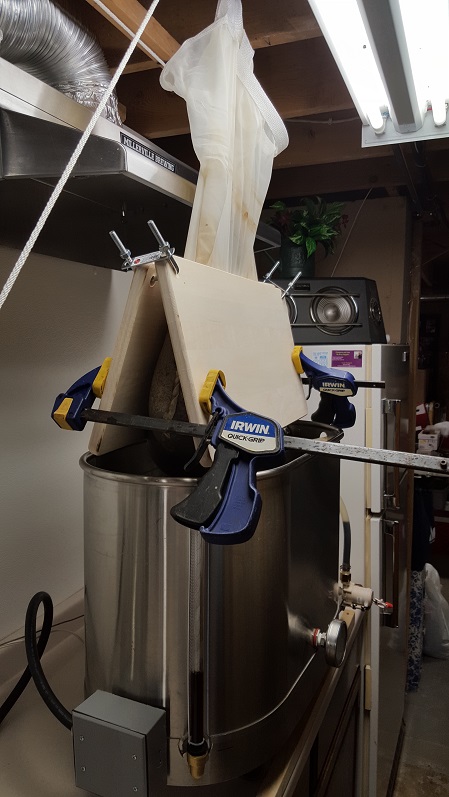I'm tempted to squeeze the bag as well, when I do BIAB. In fact, I always do, but lately it's been just over the sink, right before I throw out my spent grain. The retained wort makes the spent grain heavier. And I only do this on very small batches that I toss in the trash. Regular batches just get carried out to the compost pile.
I suggestion is to simply let the grain hang for a bit until it's just dripping slowly. Then pull it out of the way and get rid of it.
You would need to adjust your brewing calculations to account for the "deadspace" loss (which would actually be minimal, and you could alternately increase the grain absorption rate instead.) Consider that brewers who use a mash tun with a manifold or false bottom don't squeeze their grain, and they don't let it sit and drain either. BIAB brewers who don't squeeze are at least as well off in that regard.
And they may actually have an advantage. Mash tuns with a manifold or false bottom have the risk of a stuck sparge. In general stuck sparges are not a concern for BIAB brewers and they are free to crush finer, thereby increasing the potential efficiency.
Besides grain crush, the sparge method used also helps determine efficiency. The three basic ways of sparging for BIAB are:
No-sparge = Mashing at a prescribed ratio with the water, such as 1.25 quarts of water per lb of grain. This is a highly INEFFICIENT method, but many argue that it produces the best quality of wort.
Full Volume mash = Ignoring a particular ratio of grain to water and instead mashing with the amount of water needed to produce the volume of usable wort with the desired gravity. There is no sparge technically, but one could argue that the diluted mash kind of acts like a sparge, since the method produces a much better efficiency than the no-sparge method.
Lastly, there is the dunk sparge, or trickle sparge. In this method the ratio of grain to water is used to produce a pre-sparge wort, and then the mash bag is either dunked in a portion of clean water, or water is trickled over the hanging bag. The purpose is to rinse the wort that is still sitting amongst the grain particles. It's much more efficient than the no-sparge method, and slightly more efficient than the full volume mash (where the wort remaining in the grain is fairly diluted already.)
So in my mind my desire to squeeze might be determined by the value of the wort remaining in the grain. If I were to mash with the full volume, or if I dunk or trickle sparge, there is little to gain by squeezing a fairly dilute wort from the grain. However, if I did a no-sparge mash, then there is a more concentrated wort remaining in the grain, and therefore a higher percentage of useful sugars. It might therefore be advantageous to perform a squeeze and recover that wort.
I have thought about a device that could be swung open at the top of a bag, and snapped closed, then a handle or knob rotated to make the device creep down the bag and push the wort from the grains.
Alternatively I've though about a device that resembles two plates that are hinged at the "top". You start with the two pieces separate and join them together at the top of the bag, and then squeeze the bottom like a bellows. The "V" shape helps squeeze the wort from the bag.
I can't but imagine that the process of squeezing the bag each brew shortens the useful life of the bag. It's stretching it and placing it under pressure.




















































![Craft A Brew - Safale BE-256 Yeast - Fermentis - Belgian Ale Dry Yeast - For Belgian & Strong Ales - Ingredients for Home Brewing - Beer Making Supplies - [3 Pack]](https://m.media-amazon.com/images/I/51bcKEwQmWL._SL500_.jpg)






